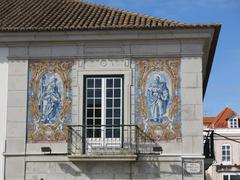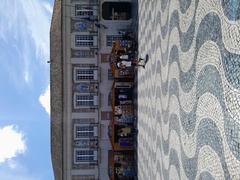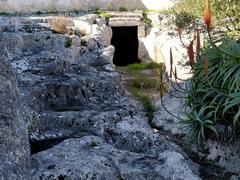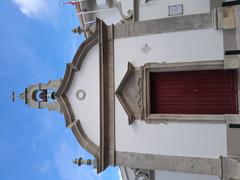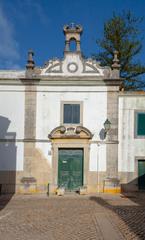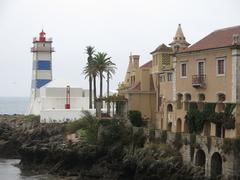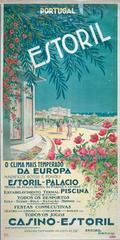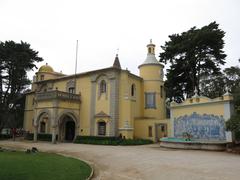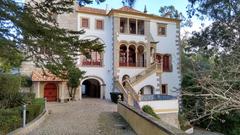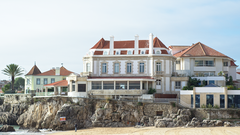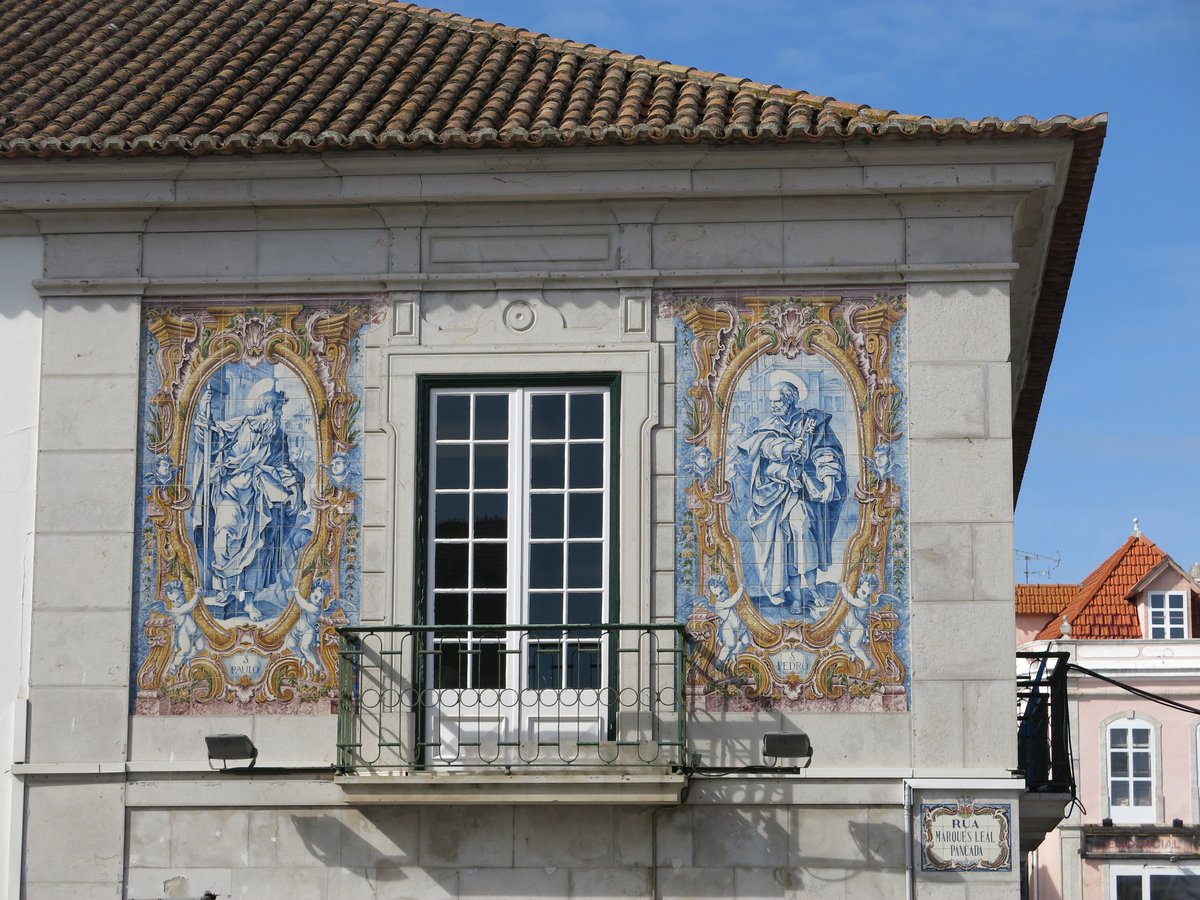
Palácio dos Condes da Guarda: Visiting Hours, Tickets, and Complete Guide to Cascais’ Historic Jewel
Date: 15/06/2025
Introduction
In the heart of Cascais, within the picturesque Estoril region, the Palácio dos Condes da Guarda—also known as the “Casa dos Azulejos”—stands as an enduring symbol of Portugal’s layered aristocratic, civic, and artistic heritage. With its remarkable azulejo tilework, architectural evolution, and prominent civic role, this palace narrates the transformation of Cascais from a humble fishing village into a cosmopolitan resort, beloved by nobility and royalty alike.
Today, the palace serves as Cascais’ Town Hall and houses the Museu da Vila, making it both a living center of municipal governance and a guardian of local history. This detailed guide covers everything you need to plan your visit, including historical context, architectural highlights, practical visitor information, nearby attractions, and helpful travel tips.
For official updates, consult the Visit Cascais website and the Cascais Municipality portal.
Table of Contents
- Historical Background
- Architectural Features & Artistic Significance
- Civic Role & Modern Use
- Visitor Information
- Nearby Attractions & Travel Tips
- FAQs
- Plan Your Visit
- Conclusion & Next Steps
- References
Historical Background
The Palácio dos Condes da Guarda traces its origins to the late 18th century, initially constructed under D. Inês Margarida da Cunha. Its prominent location at Praça 5 de Outubro, facing the Baía de Cascais, established it as a key noble residence. The palace notably sheltered Admiral Charles Cotton during the Napoleonic Wars, solidifying its early historical importance (Wikipedia).
During the 19th century, the palace changed hands and titles, becoming associated with the Counts of Guarda in 1860. The 20th century saw further adaptation: under new ownership, it briefly hosted a casino and commercial space before being acquired by the municipality in 1932. Recognized as a Property of Municipal Interest in 2006, it remains a vital cultural and civic landmark (Wikipedia).
Archaeological studies and restoration works have revealed the palace’s layered foundations, including reused fragments from structures destroyed in the 1755 Lisbon earthquake, such as the Paço dos Marqueses de Cascais and Palácio do Governador (Estudo Geral PDF, pp. 203-204).
Architectural Features & Artistic Significance
Exterior and Façade
The palace’s neoclassical façade, facing the medieval Praça 5 de Outubro, features symmetrical limestone windows and pilasters, blending harmoniously with the historic townscape. Its most striking element is the series of azulejo panels—vivid blue and white ceramic tiles depicting saints such as São Sebastião, Santo António, and São Marçal. Crafted around 1790 at the Real Fábrica de Louça do Rato, these panels represent the largest collection of saintly azulejos on any single building in Portugal (Guia da Cidade).
Interior
Inside, the palace preserves a vaulted stone entrance hall and a grand staircase adorned with late 18th-century tiles. The first floor features neobaroque décor and azulejos from the Viúva Lamego factory, while the former noble salon on the second floor showcases intricate woodwork. Ongoing renovations have maintained key historic features, including embedded fragments from earlier structures (Estudo Geral PDF).
Artistic Heritage
The palace’s nickname, “Casa dos Azulejos,” reflects its status as a showcase of Portuguese tile artistry. The façade’s religious-themed tiles, interior friezes, and original staircase tiles all contribute to its artistic significance. Even after some panels were removed in the early 20th century, preserved fragments remain visible, anchoring the palace’s legacy in Portugal’s decorative arts (Wikipedia).
Civic Role & Modern Use
Since 1932, the palace has served as the seat of Cascais’ municipal government. The upper floors house the mayor’s office and administrative departments, while the ground floor is home to the Museu da Vila, dedicated to the town’s history and evolution from fishing port to royal retreat (Guia da Cidade).
The palace is central to Cascais’ civic life, hosting official ceremonies, cultural events, and exhibitions. Its location at the heart of the town makes it a natural gathering space for residents and visitors alike.
Visitor Information
Location
- Address: Praça 5 de Outubro, Cascais, Portugal
- Nearest Train Station: Cascais (5–10 minutes on foot)
- Nearby: Praia da Ribeira, Cascais Marina, historic center
Hours & Admission
- Museu da Vila (Ground Floor): Tuesday to Sunday, 10:00–18:00
- Municipal Offices: Open Monday to Friday, 9:00–17:00 (access may be restricted to official business areas)
- Admission: Free entry to the museum and public areas; special exhibitions or events may require a ticket (Cascais Portugal Guide)
Accessibility
- Ground Floor: Wheelchair accessible
- Upper Floors: Limited access due to historic architecture
- Assistance: Contact the administration in advance for specific requirements
Guided Tours & Events
- Guided Tours: Occasionally available, especially during special events—check the official website or local tourist office for schedules
- Cultural Events: The palace hosts exhibitions, lectures, and community gatherings—details are announced online
Photography
- Photography is permitted in public areas; flash and tripods may be restricted during certain exhibitions or events
Nearby Attractions & Travel Tips
- Museu Condes de Castro Guimarães: Art and history museum in a romantic palace (Cascais Portugal Guide)
- Santa Marta Lighthouse Museum: Coastal landmark with panoramic views
- Praia da Ribeira: Sandy beach adjacent to the palace, ideal for a stroll
- Cascais Historic Center: Explore charming streets, shops, and cafés
Travel Tip: Visit in late spring or early autumn for pleasant weather and fewer crowds. Early mornings or late afternoons offer the best light for photography and a quieter atmosphere.
FAQs
Q: What are the visiting hours for Palácio dos Condes da Guarda?
A: The Museu da Vila is open Tuesday to Sunday, 10:00–18:00. Municipal offices are accessible Monday to Friday, 9:00–17:00.
Q: Is there an admission fee?
A: General admission to the museum is free; special exhibitions or events may charge a fee.
Q: Are guided tours available?
A: Yes, but only occasionally—check the official site or local tourist information for details.
Q: Is the palace accessible for visitors with disabilities?
A: The main entrance and museum are accessible, but upper floors have limited access.
Q: Can I take photographs inside?
A: Yes, in public areas; restrictions may apply during special events.
Plan Your Visit
- Allow 30–60 minutes for a full visit to the palace and museum
- Combine your visit with other central Cascais attractions for a rewarding cultural day
- Check for updates on hours, events, and guided tours before arrival (Cascais Municipality website)
Conclusion & Next Steps
The Palácio dos Condes da Guarda is more than a historic monument—it is a living emblem of Cascais’ rich evolution, blending architectural splendor, civic function, and cultural vibrancy. Whether you’re admiring its unique azulejo panels, exploring the Museu da Vila, or attending a community event, the palace offers a multifaceted experience for all visitors.
Enhance your visit:
- Download the Audiala app for guided tours and audio guides
- Follow local tourism portals and social media for the latest updates and event news
- Explore related articles for more insights into Cascais’ historic sites
Begin your journey into Cascais’ heritage at the Palácio dos Condes da Guarda, and experience the enduring charm of Portugal’s coastal gem.
References
- Discover Palácio dos Condes da Guarda: Visiting Hours, Tickets, and History at Cascais’ Premier Historical Site (Visit Cascais)
- Visiting Palácio dos Condes da Guarda: History, Tickets, Hours & Nearby Attractions in Cascais (Estudo Geral PDF)
- Palácio dos Condes da Guarda in Cascais: Visiting Hours, Tickets, and Cultural Highlights (Guia da Cidade)
- Palácio dos Condes da Guarda Visiting Hours, Tickets & Guide to Cascais’ Historic Landmark (Wikipedia), (Cascais Portugal Guide)
